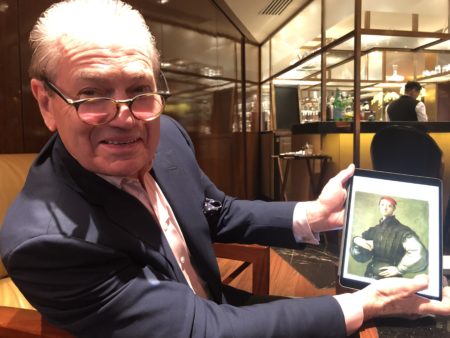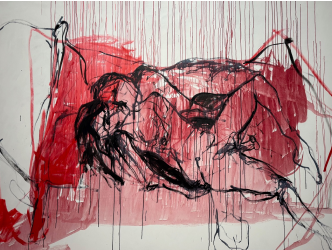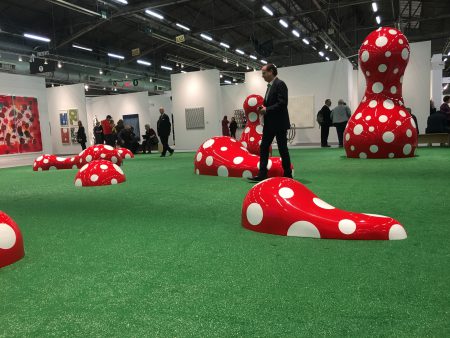Appeared like by magic
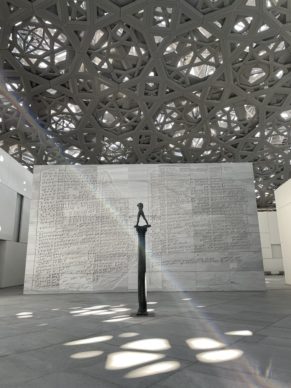
Contrary to the situation in France or in the United States, the Louvre Abu Dhabi closed its doors for only 100 days while the world was shaken by the pandemic. The museum appeared as if by magic in 2017 on a wild island previously overrun by mangroves, Saadiyat Island, inaugurated as the new regional symbol and the first of its kind.
A stunning to visit
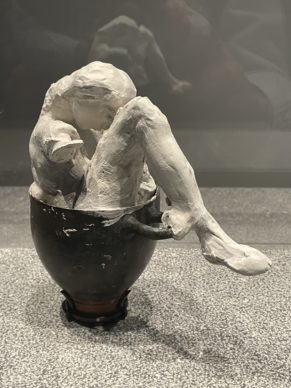
Auguste Rodin
Over 3 years later it is still just as stunning to visit. When entering this institution, one routinely experiences an almost lyrical sensation, primarily due to the architecture of Jean Nouvel. The construction represents the creative apex of this Pritzker Prize winner, who conceived a monumental dome in multi-layered metal latticework. This giant covering, which serves as natural ventilation, is now seen as the “signature” of this waterside building. It produces the strange and poetic impression of a site that is simultaneously open and enclosed.
Jacques Chirac street
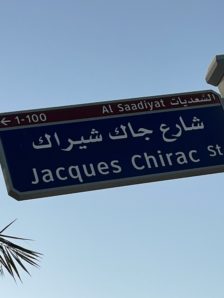
But beyond the aesthetics, the Louvre Abu Dhabi is first and foremost a political place. When given the opportunity to visit nowadays, we note that the main road running across Saadiyat Island is called “Jacques Chirac Street”. Whatever the opinions of the visiting French national, seeing the name of this former president of the French Republic within this setting, among the palm trees under the beating hot sun, can’t help but stir some small emotion The road was given this name after the death of the statesman as a tribute to the country that leased the name of its most prestigious museum for 30 years.
Such a political place

Francesco Primaticcio
But if this is indeed such a political place, it is above all due to the fact that the idea underpinning the creation of the Louvre Abu Dhabi, which opened on 8 November 2017, was that of universality. In the 21st century, “universal” does not mean global. The founders of the Louvre Abu Dhabi, with the agreement of the Emirati authorities who are Muslim by definition, conceived and built from the ground up a place that respects cultural and religious differences: with its crosses and virgins by the great classical western artists, with its headstones from a medieval Jewish cemetery or even its nude women from the history of western art, like the mischievous creatures sculpted by Rodin. This is an exhilarating aesthetic combination.
Abraham Accords

Jewish funerary stele 1250
It is as though the Louvre Abu Dhabi were a portent of the “Abraham Accords”, the peace treaty signed on 15 September 2020 between the United Arab Emirates and Israel.
The countdown has begun
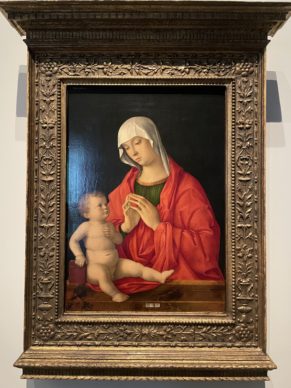
Giovanni Bellini
For now, the Louvre Abu Dhabi remains faithful to its primary purpose, still benefitting from loans from 13 French museums for half of its exhibited artworks for another 6 and a half years. The countdown has already begun. At the end of this period, the Louvre of the sands will either have to spread its own wings and become a museum without any great masterpieces, or in the meantime make a series of extraordinary acquisitions, or indeed renegotiate an agreement with the French museums.
Manuel Rabaté
“We will increasingly have to rely on artworks from Abu Dhabi,” explains Manuel Rabaté, the director of the museum. In this spirit, for example, the Louvre Abu Dhabi announced the purchase in 2019 of a portrait of Christ by Rembrandt – for 9.5 million dollars at auction. The painting is indeed captivatingly beautiful, but it is small. The institution’s annual acquisitions budget amounts to 30 million euros. When we think that the last Botticelli sold in January 2021 went for 92.2 million dollars, that won’t go very far…
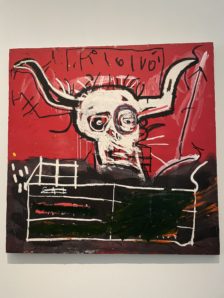
Jean-Michel Basquiat
Claude Monet
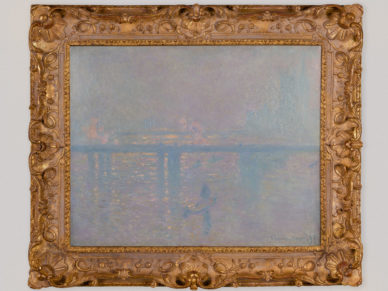
Claude Monet
Meanwhile, in the impressionist section, we notice three paintings by Claude Monet including two on loan from French museums and the third loaned from an Emirati art lover. The canvas was valued at nearly 20 million euros according to a specialist in this period. We also note in the contemporary section, which contemporary section, which has been the weakest since the museum opened, there is a canvas by Jean-Michel Basquiat on loan from the spectral Guggenheim Abu Dhabi. Spectral because this huge museum, designed by Frank Gehry, has yet to see the light of day. “The Guggenheim Abu Dhabi is still in development. For now it exists through its collection,” justifies Manuel Rabaté.
Salvator Mundi

Will we at last get to see the day that Leonardo da Vinci’s Salvator Mundi appears, the superstar work auctioned for 450 million dollars in 2017, which was officially announced for the museum? Unlikely, according to close sources, as it would appear to have been acquired by the crown prince Mohammed bin Salman. There seems to have been a miscommunication between Abu Dhabi and Saudi Arabia, two countries whose leaders are very amicable. Some predict that the work will appear in a museum built from scratch on the archaeological site of Al Ula in Saudi Arabia.
Two rival?

Jean-Etienne Liotard
If this is the case, the region will then have two rival exceptional cultural sites. In the meantime, on entering the Louvre Abu Dhabi we still encounter a series of nine abstract paintings against a blue background by Cy Twombly, made in 2008, situated close to fragments of stylised faces carved in stone dating from 2000 BC, originating from Riyadh. Aesthetically, the marriage is perfect. Diplomatically, the message is clear. The Louvre Abu Dhabi is a political museum…
Support independent news on art.
Your contribution : Make a monthly commitment to support JB Reports or a one off contribution as and when you feel like it. Choose the option that suits you best.
Need to cancel a recurring donation? Please go here.
The donation is considered to be a subscription for a fee set by the donor and for a duration also set by the donor.

